In 2003, filmmaker Lars Von Trier challenged fellow director Jørgen Leth to remake his film The Perfect Human five times, each with a various challenge, or obstruction, cast over it.

The obstructions were, at times, devious: one version must be shot in the “worst place in the world,” another must be made of shots that last no longer than 12 frames, and another must be animated. Obstructions, the reasoning went, allowed an artist to see artwork from a fresh perspective, and to challenge the artist in ways that were meant to be uncomfortable and existentially compromising.
In his California studio Aaron Westerberg has been painting with obstructions. “I’ve been doing these color studies, these little exercises that I do to expand my understanding of color. I do them at the end of the day, and they’re usually small,” he says. “They’re meant to help me push my color so I give myself a rule—no blending. I have to use intermediate steps to get the colors where I want. There are no shortcuts, and it’s like a little puzzle I need to solve. I’ll typically start with a colored gel light. In one I use a plastic skull and the light-colored plastic really reflects the light, so much that you can really see the color vibrations and harmony. The studies are really informing what I can do with the paint.”
Denne historien er fra June 2018-utgaven av American Art Collector.
Start din 7-dagers gratis prøveperiode på Magzter GOLD for å få tilgang til tusenvis av utvalgte premiumhistorier og 9000+ magasiner og aviser.
Allerede abonnent ? Logg på
Denne historien er fra June 2018-utgaven av American Art Collector.
Start din 7-dagers gratis prøveperiode på Magzter GOLD for å få tilgang til tusenvis av utvalgte premiumhistorier og 9000+ magasiner og aviser.
Allerede abonnent? Logg på

FULL EXPOSURE
Photographer Conor Martin documents the present using photographic methods of the past.
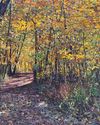
Autumnal Light
The landscapes and nature scenes of painter Jennifer Sowders are irresistibly tactile, filled with varying textures that seem to leap off the canvas.
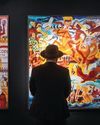
Art for All
Members of Art Dealers Association of America come together for a philanthropic affair.
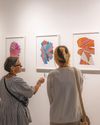
Modern Marketplace
Redwood Art Group brings together the San Diego region for another class-act celebration of contemporary artwork.
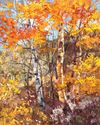
An Enchanting Evening
Scottsdale Artists’ School knows how to throw an art party.
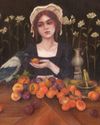
Timeless Tales
Soft, warm undertones underscore the mood of enchantment that runs through Nom Kinnear King’s paintings.

Next Exit New York
Coming off his series that focused on San Francisco and Los Angeles freeway signs, artist Eric Nash’s sights are now set on New York. Now on view at George Billis Gallery's Manhattan location are seven of Nash's new oil paintings and two drawings that explore the signage of New York City freeways. Although Nash's work is tightly rendered, he doesn’t consider himself a photorealist, but rather someone who utilizes those techniques to express ideas.
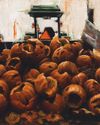
Monster Mash
Vampires, witches, ghouls and all things that go bump in the night are the theme of the exhibition Monster Mash, now at Abend Gallery.

Inside/Outside
Those familiar with Geoffrey Johnson's populated by inky figures and trailing shadows that bleed into the wet streets, and architectural elements obscured to varying degrees by the misty atmosphere.
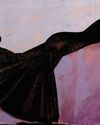
Bold Figures; Bold Color
For Brooklyn based painter J Louis, it’s all about balance, which can mean many different things in a composition, but for Louis, it’s about balancing his female figures among a unique landscape of color.